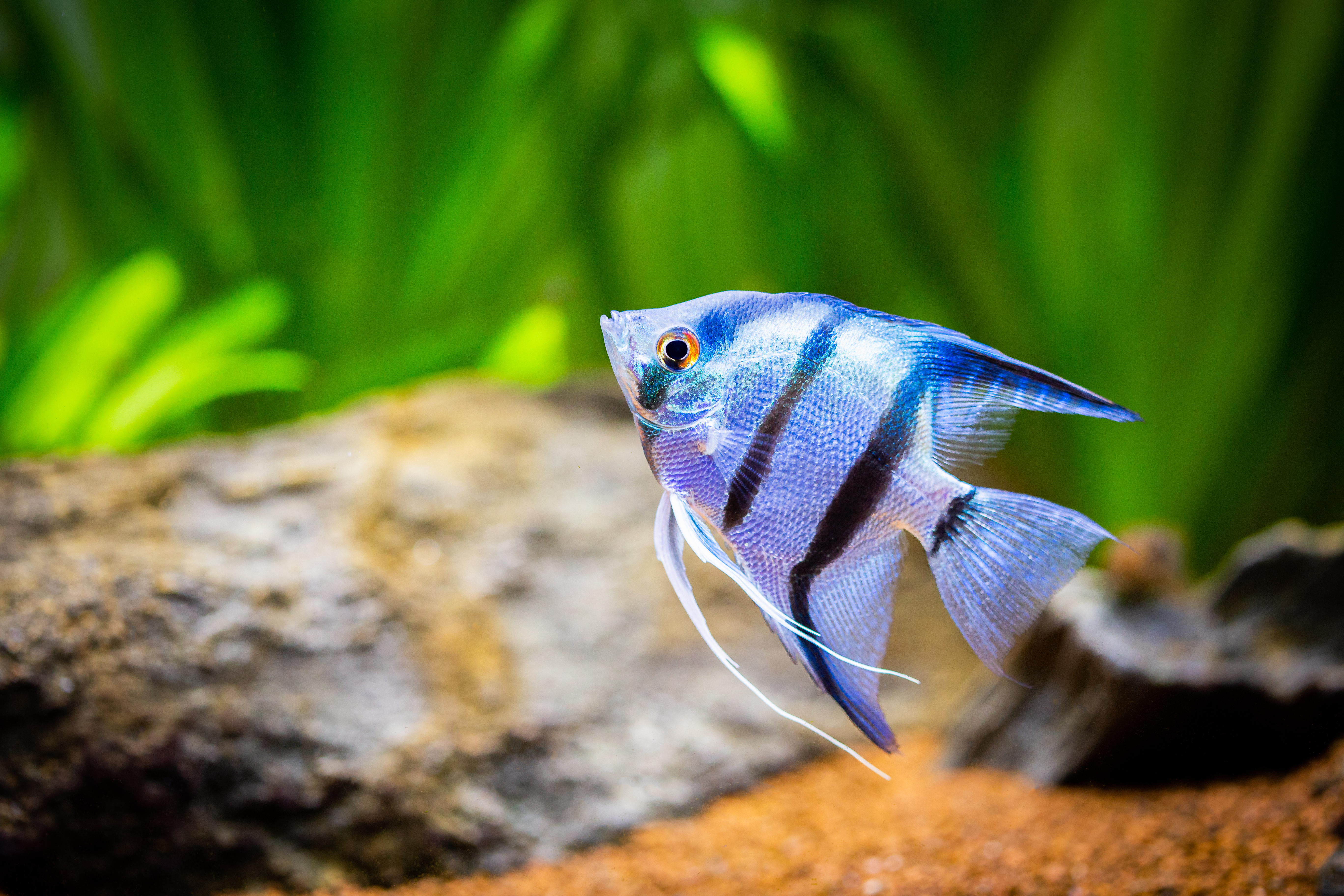Angelfish
(Pterophyllum scalare)

Description
Pterophyllum scalare, most commonly referred to as angelfish or freshwater angelfish, is the most common species of Pterophyllum kept in captivity. It is native to the Amazon Basin in Peru, Colombia, and Brazil. Particularly to the Ucayali river in Peru, the Oyapock River in French Guiana, the Essequibo River in Guyana, the Solimões, the Amapá, and the Amazon rivers in Brazil. It is found in swamps or flooded grounds where vegetation is dense and the water is either clear or silty. Its native water conditions range from a pH of 7.0 to 6.0, a water hardness range of 3 to 10 °dH, and water temperature ranging from 26 to 30 °C (75 to 86 °F). This is the species of angelfish most frequently found in the aquarium trade. A similar (cross-breeding possible) P. scalare exists in the Orinoco. They are of the same size and shape, the only difference being its stripes: the Orinoco P. scalare has thinner, but dual stripes. The diet of Pterophyllum scalare consists of a wide food spectrum; they feed on juvenile fishes, prawns, and worms. They feed on different types of worms such as Tubifex worms, vermicompost worms, and bloodworms, the tubifex diet are high in protein and nutrients for the angelfish resulting in high significant growth and live food diet provided better reproductive performance. Furthermore, the mosquito larvae is also a very nutritious live feed food. First described by Hinrich Lichtenstein in 1823, First import to Europe (Germany) by C.Ziggelkow, Hamburg in 1909. Pterophyllum is a small genus of freshwater fish from the family Cichlidae known to most aquarists as angelfish. All Pterophyllum species originate from the Amazon Basin, Orinoco Basin and various rivers in the Guiana Shield in tropical South America. The three species of Pterophyllum are unusually shaped for cichlids being greatly laterally compressed, with round bodies and elongated triangular dorsal and anal fins. This body shape allows them to hide among roots and plants, often on a vertical surface. Naturally occurring angelfish are frequently striped transversely, colouration which provides additional camouflage. Angelfish are ambush predators and prey on small fish and macroinvertebrates. All Pterophyllum species form monogamous pairs. Eggs are generally laid on a submerged log or a flattened leaf. As is the case for other cichlids, brood care is highly developed. Pterophyllum should not be confused with marine angelfish, perciform fish found on shallow ocean reefs.
Taxonomic tree:







